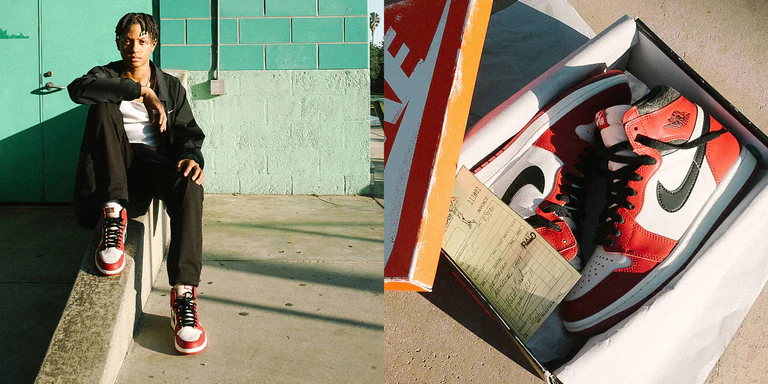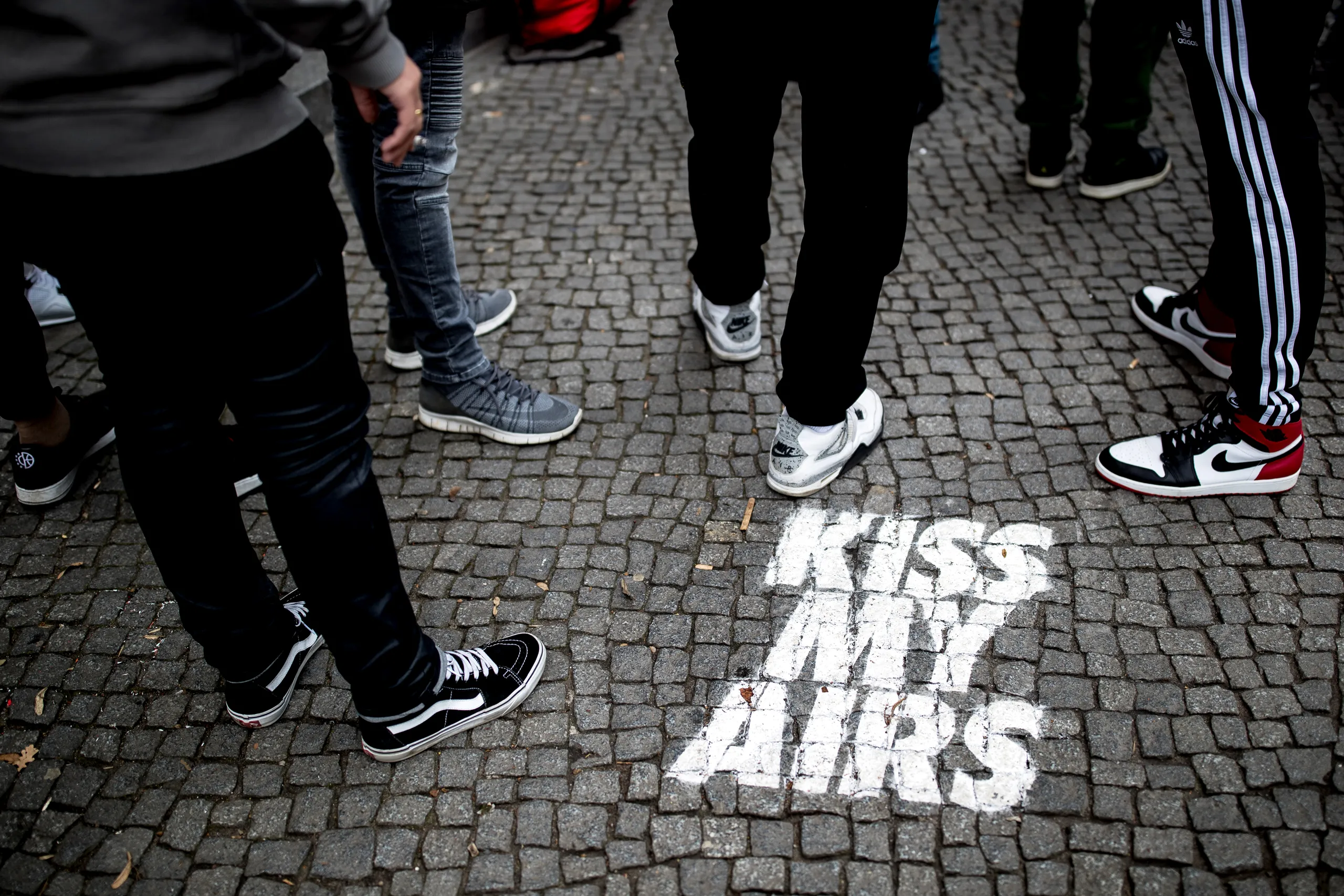In the ever-evolving world of streetwear fashion, specific icons stand the test of time and continue to reign supreme. Among these icons, one name consistently stands out: Air Jordan 1. These sneakers have transcended their athletic origins to symbolize style, culture, and individuality. In this article, we will explore the fascinating journey of Air Jordan 1s and why they continue to rule the streetwear kingdom.
Contents
The history and development of Air Jordan 1
To understand the enduring appeal of Air Jordan 1s, it’s crucial to delve into their rich history and development. Designed by Peter Moore, the Air Jordan 1 debuted in 1985 as the signature shoe for NBA superstar Michael Jordan. The shoe was groundbreaking not only in terms of performance but also in its visual aesthetics.
During an era when basketball sneakers were predominantly white, the Air Jordan 1 broke the mold with its bold colorways and high-top silhouette. The Air Jordan 1 “Bred” (black and red) and Air Jordan 1 “Chicago” (red, white, and black) color schemes were the first to hit the market, instantly capturing the attention of basketball fans and sneaker enthusiasts alike.

Source: asphaltgold.com
What makes Air Jordan 1s stand out?
Air Jordan 1’s enduring appeal can be attributed to several key factors. First and foremost, it’s their timeless design. The ankle collar’s high-top silhouette and iconic “Wings” logo give them a distinct and unmistakable look. The combination of leather and suede materials provides both durability and a luxurious feel, setting them apart from other sneakers.
Furthermore, the Air Jordan 1 pioneered the concept of athlete endorsements in the sneaker industry. Michael Jordan’s superstar status and on-court prowess lent an aura of prestige to the shoe. This created a unique connection between fans and the product, making Air Jordan 1s more than just footwear – they symbolized aspiration and achievement.
The influence of Air Jordan 1s on streetwear culture
Air Jordan 1s didn’t just make waves in the basketball world; they played a pivotal role in shaping streetwear culture. During the mid-1980s, the NBA banned the Air Jordan 1 due to its non-conforming color scheme, leading to a wave of controversy and publicity. This ban and Michael Jordan’s rebellious image only added to the mystique surrounding the sneakers.
As a result, Air Jordan 1s became synonymous with counterculture and self-expression. Streetwear enthusiasts embraced the boldness of the design and the defiance it represented. These sneakers became a canvas for individuality, with wearers customizing them through various means, such as graffiti art and unique lacing styles.
Over the years, Air Jordan 1s have been embraced by artists, musicians, and fashion influencers. Their versatility allows them to effortlessly complement a range of styles, from hip-hop and skate culture to high fashion and urban streetwear. This versatility has helped them maintain their relevance and adapt to changing fashion trends, further solidifying their place in streetwear culture.

Source: newyorker.com
The popularity of Air Jordan 1 Replicas
One must mention the thriving market for replica sneakers before discussing the Air Jordan 1’s impact on streetwear. While genuine Air Jordan 1s are highly sought after and can fetch exorbitant prices, replicas offer an affordable alternative for enthusiasts who want to capture the essence of the iconic shoe without breaking the bank.
The Popularity of Air Jordan 1 Replicas
The Air Jordan 1, first introduced by Nike in 1985, remains one of the most iconic and sought-after sneaker models in fashion and streetwear. Originally designed for basketball legend Michael Jordan, this silhouette has transcended its athletic roots to become a cultural phenomenon. However, as the demand for authentic Air Jordan 1s has surged over the years, so has the market for replicas.
The popularity of Air Jordan 1 replica shoes can be attributed to several key factors. Firstly, the price point of authentic Air Jordan 1s often places them out of reach for many sneaker enthusiasts. Limited edition releases and collaborations with designers and artists can drive up the resale prices of these sneakers to astronomical levels. As a result, replicas offer a more affordable alternative for individuals who want to enjoy the aesthetic appeal of the Air Jordan 1 without breaking the bank.
Another significant reason for the popularity of Air Jordan 1 replicas is the meticulous attention to detail and quality that many replica manufacturers have invested in. Over the years, these manufacturers have honed their craft, producing replicas nearly indistinguishable from the authentic versions. From the materials used to the stitching and overall construction, replicas have become increasingly convincing, making it difficult for the average consumer to spot the differences.
Moreover, the rise of sneaker culture has created a demand for Air Jordan 1 replicas among collectors and enthusiasts who appreciate the artistry of these sneakers. Many individuals see replicas as a way to expand their sneaker collections without the guilt of wearing and potentially damaging valuable, authentic pairs. This has led to a thriving secondary market for Air Jordan 1 replicas.
The streetwear and fashion industries have also embraced the Air Jordan 1 silhouette, with celebrities, influencers, and designers frequently spotted wearing them. As a result, the desire to emulate these iconic looks has driven the demand for replicas among fashion-conscious individuals who want to stay on-trend without sacrificing their budget.
Despite their popularity, it’s important to note that the production and sale of replica sneakers can infringe on intellectual property rights and trademarks held by Nike and Michael Jordan’s brand. As a result, the replica market operates in a legal gray area, with the potential for legal consequences for both manufacturers and buyers.

Source: fastfashionnews.co.uk
An analysis of the Air Jordan 1 design
The design of the Air Jordan 1 is a masterpiece of sneaker architecture. Its high-top silhouette provides ankle support, making it suitable for basketball, while the combination of leather and suede materials offers both durability and style. The distinctive “Swoosh” logo on the side panel is an iconic element of Nike’s branding and adds to the shoe’s visual appeal.
The colorways of Air Jordan 1s are their most significant design feature. Each release comes with a unique combination of colors, and some editions even pay homage to Michael Jordan’s illustrious career and personal anecdotes. This continuous innovation in color schemes keeps collectors and enthusiasts eagerly anticipating each new release.
Air Jordan 1s in the resale market
The resale market for Air Jordan 1s is a testament to their enduring popularity. Sneaker enthusiasts and collectors scour the internet and specialized marketplaces to acquire rare and coveted editions. Some of these sneakers can be appreciated over time, making them a stylish choice and a potentially lucrative investment.
The resale market reflects the cultural significance of Air Jordan 1s. It’s not just about owning a pair of sneakers; it’s about owning a piece of history and a symbol of a cultural movement. Sneakerheads are willing to pay a premium for sneakers that carry that cultural weight and history.
In a world where fashion trends come and go, Air Jordan 1s have stood the test of time and continue to rule the streetwear kingdom. Their timeless design, connection to Michael Jordan’s legacy, influence on streetwear culture, and enduring popularity in the resale market all contribute to their iconic status.

Source: dripuniqueuk.com
These sneakers have transcended their athletic origins to become a symbol of self-expression, individuality, and cultural significance. Whether you’re a die-hard collector or simply someone who appreciates stylish footwear, Air Jordan 1s hold a special place in the hearts of many. As they continue to captivate new generations of sneaker enthusiasts, it’s safe to say that Air Jordan 1s will remain a force to be reckoned with in streetwear for years.
